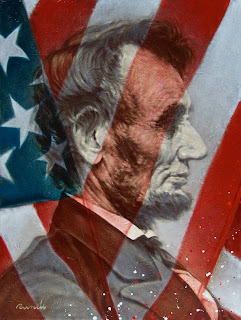 |
| Sister Mary Corita |
 |
| Pat Rock |
Patricia McGuire, later known as Patricia McGuire Rock, was
born in Rock Rapids, Iowa
in 1930. Frances Elizabeth Kent, later
known as Corita Kent, was born in Fort
Dodge , Iowa Iowa City , Iowa
The following is a link to a story I wrote about Pat Rock, http://coltonspointtimes.blogspot.com/2013/11/farewell-to-my-friend-patricia-mcguire.html
Corita Kent
I believe it was the greatest decade of upheaval in our
nation's history and an unsuspecting Nun who was born in Iowa
and teaching in California
Sister Mary Corita was such a champion that it led to her
leaving the convent, just as Sister Louis Marie did a few years later. Few people knew her back then, and fewer know
her now, but it is time we learn about some of the unsung heroes in our nation's
history.
Here is her story as told by the Corita
Art Center
in California
Corita Kent, Warhol’s Kindred
Spirit in the Convent
“The only rule is work,” read the seventh point on the Immaculate Heart College
“If you work, it will lead to
something,” the edict continued. “It’s the people who do all of the work all
the time who eventually catch on to things.”
 |
| Warhol and Kent art |
Predating even Andy Warhol (who later became
an influence on her work), Kent was an early adopter of serigraphy, or
silk-screening — considered a sign painter’s lowly tool at the time. She shared
Warhol’s interest in the iconography of advertising but used it to very
different ends, lifting texts from advertisements and poems and deconstructing
and juxtaposing them to form colorful typographic works to help people “use
their whole selves better,” as she once said.
This idealism dovetailed with the zeitgeist — her work found
its way into civil rights and Vietnam protests — and landed her on the cover of
national magazines; a stamp she designed for the United States Postal Service
sold more than 700 million copies. But today she’s mostly remembered as a cult
icon of sorts, whose life and work suggest a kind of alternate history of Pop
Art. The curator Ian Berry, who recently
assembled a traveling exhibition of Kent’s work with another curator,
Michael Duncan, describes her as “a key figure in the history of American art,”
and “a fiercely independent maker with a unique voice and vision.”
Frances Elizabeth Kent was born in Fort
Dodge , Iowa , in 1918 and grew
up in Los Angeles .
Her family was Catholic, and after high school, she joined the Order of the
Immaculate Heart of Mary, earning an arts degree at the college the order ran.
Ten years later, while pursuing her master’s degree, Kent was
introduced to print making, the medium that would later bring her to the
attention of art world.
By the early 1950s, she was forging her own unique
aesthetic, and soon “priests and nuns from orders all over the country were
sent to be educated at Immaculate Heart College ,”
wrote Ray Smith, director of the Corita Art Center in Los Angeles , in an email.
For nearly a decade in the late ’50s and early ’60s, Kent toured
widely, delivering lectures at institutions — religious and otherwise — across
the country about her work.
In the late ’60s, in the wake of the Second Vatican Council
— a landmark effort to modernize the church, which many Catholic clergy members
took as a blessing for social and political activism — the Immaculate Heart
sisters began chafing at the strictures that had traditionally bound the order.
Kent transformed Immaculate Heart College’s annual Mary’s Day procession from
an austere march into a community celebration that included theatrical
performances, food drives and masses of flower-decked followers holding up
signs inspired by her art — part of the sisters’ campaign to bring secular and
religious people closer together.
At the same time, Kent ’s work was becoming
increasingly political, addressing the Vietnam War and humanitarian crises.
Tensions between the order and the church leadership in Los Angeles mounted, and Sister Mary
Corita left the order in 1968, returning to secular life as Corita Kent. (Most
of the other Immaculate Heart sisters followed suit not long after; in 1969,
the order separated from the church, continuing its work as a lay organization.
The Immaculate Heart College
The Corita Art Center has
a vast catalog of unprocessed photographs of Kent and her work. The
photographer Suzanna Zak recently went digging through them and turned up a
remarkable record of Kent ’s
life. The selection here includes images of Kent teaching as well as many
photographs that Kent herself took.




















































